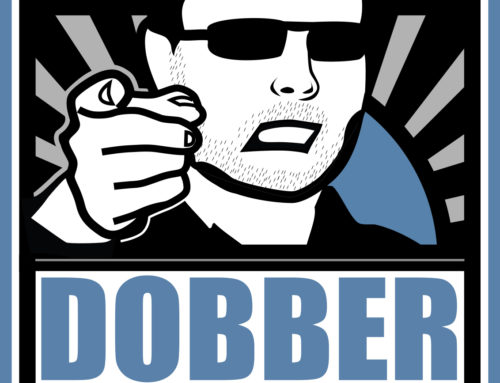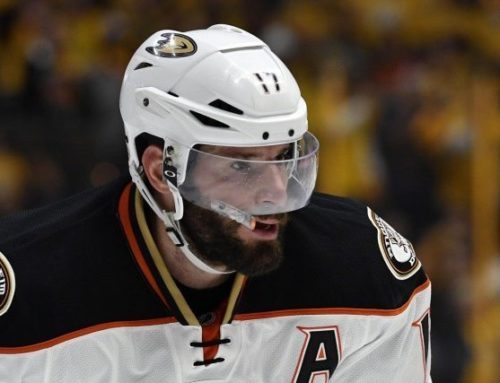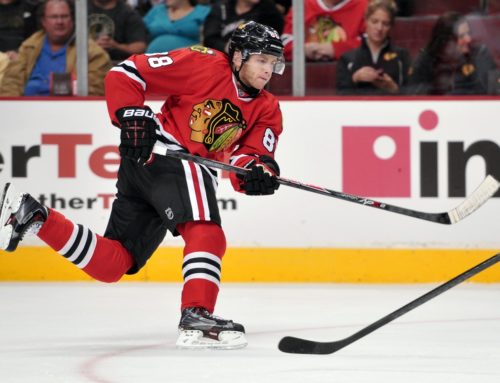The Economy of Movement
Justin Goldman
2010-11-01

Now that we're three solid weeks into the NHL season, I've been able to re-affirm a number of trends I've witnessed and better understand another puck-stopping dynamic that separate a pro goalie from an elite goalie. Today's lesson should go a long way in acting as a theoretical guide for what I've learned and truly help you make better fantasy decisions with your own goaltenders. It will also teach you how the brilliant Tim Thomas shatters this dynamic to the point he's once again the best goalie in the NHL.
The economy of movement, it seems, is more important to the success of a pro goalie than ever before. I watch a goalie like Michal Neuvirth, who is just a rookie, and then I look at a goalie like Craig Anderson. Clearly, both are tremendous athletes and have an excellent ability to stop the puck in their own unique way.
Neuvirth, who went 7-3-0 with a 2.15 goals against average and .926 save percentage, was so successful in October due in large part to his ability to minimize his movements in an economical way. He rarely got caught over-committing or over amplifying his footwork. He was rarely caught diving or lunging or losing his balance in an awkward manner. He made saves by getting the center of his chest behind pucks, staying upright and keeping his body language very quiet, calm and composed.
This minimalistic approach to playing the position not only looks much more visually appealing from my scouting perspective, but if you look goaltending as a whole from a tactical standpoint in October, it was very successful. And there were a multitude of examples of this playing out within games and goalies over the past few weeks.
Anderson went 3-4-0 with a 3.15 goals against average and .907 save percentage in October and struggled partially because he doesn't rely on solid fundamentals, technique or positioning. He's a "read and react" goalie that does whatever it takes to stop the puck. He dives, scrambles and tries to get his body behind the puck in a less-efficient manner compared to a goalie like Neuvirth. Is it effective? Sure. Is it great to watch a goalie work extremely hard and thrive on his focus and energy? Absolutely. But the position is all about precision and consistency. In my opinion, I don't see much efficiency in Anderson's game. It works, but it does not equal an economy of movement. And now he's injured for an undetermined amount of time.
Answer this – what makes Dwayne Roloson so successful at his age? Simply put, he works extremely hard at moving only as much as he needs to. He works with his goalie coach, Sudsy Maharaj, on this aspect of playing the position more than most and it has paid dividends this season. Niklas Backstrom and Carey Price are two other perfect examples of this as well.
Devan Dubnyk, who has now officially won the battle for the backup position in Edmonton with the announcement that Jeff Deslauriers has been waived, was another example of the economy of movement within the course of a single game. Read my scouting report on his first start of the season last week in a 3-2 shootout loss against Columbus.
Despite the loss, this dynamic of economical movement played out perfectly for him and ultimately helped him with the battle over JDD. In that game against Columbus, Dubnyk was all over the place, coughing up juicy rebounds and lacking any kind of composure. But as the game went along, he got into a groove and his entire technique looked refined by the time the third period rolled around. It was great to watch and a perfect example of why patience is truly a virtue when it comes to goaltending.
Ultimately, these few examples prove that less is more for goalies. This stresses, in my opinion, the importance of conserving energy, sealing holes and staying patient. That's what it takes to make the timely save and play well beyond your forties. And when I spoke to Mathieu Garon on Saturday night after the Avalanche mopped the floor with Steve Mason, I asked him what he thought was the most vital key to stopping breakaways in today's NHL.
"You just want to be patient and force the shooter to make the first move," he said. "That's where you really become successful. But if you go down on your knees too quick, you will be in trouble. So you always want to let the shooter make the first move."
This economy of movement dynamic truly speaks volumes on whether or not your fantasy goalies are starting to struggle. When the amount of overall movement increases, a goalie is more prone to getting caught out of position, giving up rebounds, over-committing on their angles and making hasty and incorrect decisions. When the amount of movement seems to decrease, they are displaying patience, letting the puck hit them, absorbing more shots and conserving energy.
This is why, regardless of whether it is pulled off successfully or not, I'm never a fan of the poke check. It is a move born out of desperation that causes way too much movement and forces a goalie to act instead of react. There are times when it works, but even if it does, look at how much energy is exerted, where they end up on the ice after the poke check is made, and how long it takes them to recover and get back into their normal stance.
Only rarely in the past two decades has a goalie thrived and excelled with an increase of movement. When I mentioned Thomas in the opening paragraph, it was because he shatters this dynamic. There's nothing economical about his movements and he's clearly not worried about being technically sound. He simply does whatever it takes to stop the puck. At this stage in his career, Thomas is an enigma wrapped in a riddle. He's the complete opposite of everything a pro goalie is taught. He's the anti-goalie – the one that does what all other goalies try not to do. So what puck-stopping traits does he possess that others don't?
It literally comes down to the power of the mind. While 90% of goalies, especially the less experienced ones, are thinking about proper execution and perfect technique, Thomas' only concern is getting a pad or a part of his body behind the puck. Combined with an insane energy level and work ethic, he simply finds a way to get the job done. He is at a point in his life when looks, potential and future are tossed out the window. He's rolling down the goalie highway with the tunes on full blast and not a worry in the world. He always has a smile on his face and there's no visible difference in his work ethic from a practice to a game.
In conclusion, this is a lesson that many "technically sound" or "elite skilled" goalies need to learn when they are struggling. And right now, that screams Marc-Andre Fleury. Everyone is wondering why he's struggling, but to me, the issues are not hard to understand. Fleury, who is 1-5-0 with a 3.35 goals against average and .863 save percentage, is simply not able to get into a rhythm because he can't abandon his traditional "technique-first" mentality and put forth the effort needed to simply win a game.
Because Brent Johnson is playing out of his mind, going 5-0-1 with a 1.16 goals against average and .960 save percentage, Fleury is not getting the consistent minutes. Therefore he goes from playing a game, suffering a loss, then going right back to the bench. It has damaged his confidence and blocked any opportunity for Fleury to get into a rhythm. The severe difference in statistics and performance also lends a hand to Johnson getting more starts, which makes things even tougher for Fleury.
In my opinion, Fleury's struggles will continue until he realizes that he has to abandon his comfortable mental approach to stopping the puck. He needs to channel his inner Tim Thomas and do whatever it takes, however it looks, to stop the puck. All he needs is a single win to reverse the momentum. But he hasn't done it yet. And I don't know what Gilles Meloche is doing to try and stop the bleeding, but to me it's simply a matter of hitting the ice like a crazy beast and channeling an excessive amount of mental and physical energy on winning a hockey game. Fleury needs to lay it all on the line, get the two points and move on.
So, at the end of today's lesson, what does this all mean? Aside from the obvious tangible aspects of minimal movement as opposed to Thomas' ability to shatter that dynamic with his excessive movement style, what does his success teach us about taking all form and functionality of goaltending and tossing it aside?
It's simple. For goaltending at the professional level, it is always mind over matter.





 TOR
TOR BOS
BOS DAL
DAL VGK
VGK EDM
EDM L.A
L.A COL
COL FLA
FLA T.B
T.B VAN
VAN NYR
NYR WPG
WPG PIT
PIT
